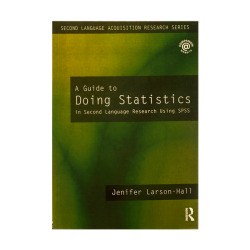The Post method Condition:Emerging Strategies for Second/Foreign Language Teaching
The Post method Condition:
Emerging Strategies for Second/Foreign Language Teaching
Writer: B. Kumaravadivelu
TESOL Quarterly, Vol. 28, No. 1. (Spring, 1994), pp. 27-48.
Summarized: Saeed Mojarradi Ph.D. Candidate T.3
Saturday, October 6, 2018
After swearing by a succession of fashionable language teaching methods and dangling them before a bewildered flock of believers, we seem to have suddenly slipped into a period of robust reflection.
In the past few years, we have seen a steady stream of evaluative thoughts on the nature and scope of method.
We have also witnessed the emergence of alternative ideas that implicitly redefine our understanding of method (Kumaravadivelu, 1992, 1993a; Richards & Lockhart, 1994; Rivers, 1992; Stern, 1992). Not only do these studies caution us against the uncritical acceptance of untested methods, but they counsel us against the search for the best method and indeed against the very concept of method itself.
THE POSTMETHOD CONDITION
The post method condition is a state of affairs that compels us to refigure the relationship between the theorizers and the practitioners of method. As conceptualizers of philosophical underpinnings governing language pedagogy, theorizers have traditionally occupied the power center of language pedagogy while the practitioners of classroom teaching have been relegated to the disempowered periphery.
If the conventional concept of method entitles theorizers to construct knowledge-oriented theories of pedagogy, the post method condition empowers practitioners to construct classroom-oriented theories of practice. If the concept of method authorizes theorizers to centralize pedagogic decision making, the post method condition enables practitioners to generate location-specific, classroom-oriented innovative practices.
In practical terms, the post method condition signifies several possibilities for redefining the relationship between the center and the periphery. First and foremost, it signifies a search for an alternative to method rather than an alternative method.
Out of the inherent contradictions between method as conceptualized by theorists and method as actualized by practitioners has emerged a need to look beyond the notion of method itself. From the conceptualizer’s point of view, each language teaching method in its idealized version consists of a single set of theoretical principles derived from feeder disciplines and a single set of classroom procedures directed at classroom teachers. Thus, there are language-centered methods (e.g., audiolingualism) that seek to provide opportunities for learners to practice preselected, presequenced linguistic structures through form-focused exercises, assuming that a preoccupation with form will ultimately lead to L2 mastery.
Furthermore, as the study conducted by Swaffar, Arens, and Morgan (1982) revealed, even syllabus designers and textbook producers do not strictly follow the underlying philosophy of a given method, and more importantly, even teachers who are trained in and claim to follow a particular method do not fully conform to its theoretical principles and classroom procedures .
Confronted with “the complexity of language, learning, and language learners every day of their working lives in a more direct fashion than any theorist does,” teachers have developed “the conviction that no single perspective on language, no single explanation for learning, and no unitary view of the contributions of language learners will account for what they must grapple with on a daily basis”.
In such circumstances, it is not surprising that all attempts to devise alternative methods have proved to be an exercise in futility.
Secondly, the post method condition signifies teacher autonomy. The conventional concept of method “overlooks the fund of experience and tacit knowledge about teaching which the teachers already have by virtue of their lives as students” (Freeman, 1991, pp. 34-35).
The post method condition, however, recognizes. The teachers’ potential to know not only how to teach but also know how to act autonomously within the academic and administrative constraints imposed by institutions, curricula, and textbooks. It also promotes the ability of teachers to know how to develop a reflective approach to their own teaching, how to analyze and evaluate their own teaching practice, how to initiate change in their classroom, and how to monitor the effects of such changes. In short, promoting teacher autonomy means enabling and empowering teachers to theorize from their practice and practice what they have theorized.
The third characteristic feature of the post method condition is principled pragmatism. Principled pragmatism is different from eclecticism which has long been advocated to overcome the limitations of any given method. The proponents of eclecticism aim to promote “the careful, principled combination of sound ideas from sound sources into a harmonious whole that yields the best results” (Hammerly, 1991, p. 18).
Principled pragmatism thus focuses on how class-room learning can be shaped and managed by teachers as a result of informed teaching and critical appraisal. One of the ways in which teachers can follow principled pragmatism is by developing what Prabhu (1990) calls, a sense of plausibility. Teachers’ sense of plausibility is their “subjective understanding of the teaching they do.
Teachers need to operate with some personal conceptualization of how their teaching leads to desired learning-with a notion of causation that has a measure of credibility for them” (p. 172). This subjective under-standing may arise from their own experience as learners and teachers and through professional education and peer consultation. Because teachers’ sense of plausibility is not linked to the concept of method, an important concern is “not whether it implies a good or bad method, but more basically, whether it is active, alive, or operational enough to create a sense of involvement for both the teacher and the student” (p. 173).
The three major characteristics of the post method condition out-lined above provide the foundation on which a pedagogic framework may be constructed. Such a framework could enable teachers to develop the knowledge, skill, attitude, and autonomy necessary to devise for themselves a systematic, coherent, and relevant alternative to method that is informed by principled pragmatism. Although the purpose of such a framework is to help teachers become autonomous decision makers, it should, without denying the value of individual autonomy, provide adequate conceptual underpinnings based on cur-rent theoretical, empirical, and pedagogic insights so that their teaching act may come about in a principled fashion. In short, it should allow the possibility for activating and developing teachers’ sense of plausibility and create in them a sense of interested involvement.
A STRATEGIC FRAMEWORK FOR L2 TEACHING
The proposed strategic framework for L2 teaching consists of macrostrategies and micro strategies.
Macro strategies are general plans de-rived from theoretical, empirical, and pedagogical knowledge related to L2 learning teaching.
A macro strategy is a broad guideline, based on which teachers can generate their own situation-specific, need-based micro strategies or classroom techniques. In other words, macro strategies are made operational in the classroom through micro strategies. As I see them, macro strategies are theory neutral as well as method neutral.
Theory neutral does not mean a theoretical; theory neutral means that the framework is not constrained by the underlying assumptions of any one specific theory of language, learning, and teaching. Likewise, method neutral does not mean method less; rather it means that the framework is not conditioned by a single set of theoretical principles or classroom procedures associated with any one particular language teaching method.
The strategic framework comprises the following 10 macrostrate-gies: (a) maximize learning opportunities, (b) facilitate negotiated inter-action, (c) minimize perceptual mismatches, (d) activate intuitive heuristics, (e) foster language awareness, (f) contextualize linguistic input,
(g) Integrate language skills, (h) promote learner autonomy, (i) raise cultural consciousness, and (j) ensure social relevance.
These macro-strategies are couched in imperative terms only to connote their operational character and not to convey any prescriptive quality. In what follows, I briefly discuss each of these macro strategies. Because I wish to focus on macro strategies in this paper, I have not attempted to elaborate on micro strategies in any systematic manner. I have however, where possible, suggested some sources that teachers can draw from in order to design their own micro strategies.



